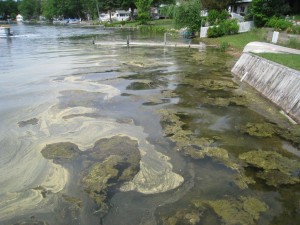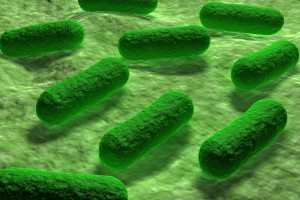Beach Closed
No Swimming!
“The lake at Cowans Gap State Park has been closed to all activities in response to the recently reported cases of E. coli infections. “This decision was made after six positive cases and three additional probable cases of Escherichia coli O157:H7 were identified in persons who reported swimming in the lake during late July (2010)” – Terry Brady, Pennsylvania Department of Conservation and Natural Resources

The Impact
The impact of a closed lake beach is devastating. Socio-culturally, communities lose a valuable low-cost recreational resource. Economically, tens – if not hundreds of thousands of dollars are lost each day. More critical – people get seriously ill.
Pathogenic water-borne organisms such as Salmonella, Giardia, Campylobacter, Cryptosporidium and others cause gastrointestinal and respiratory illnesses. Swimmers suffer flu-like symptoms, fever, nasal congestion, diarrhea, vomiting, skin, ear, and eye infections. In highly toxic water, swimmers are exposed to more serious diseases like dysentery, hepatitis, cholera, and typhoid fever. (www.water.epa.gov). Children, the elderly, and people with weakened immune systems are the most vulnerable.
In the most extreme cases, outbreaks of E. coli O157:H7 cause post-diarrheal hemolytic uremic syndrome (D+HUS) which is a severe, life-threatening complication that leads to hemorrhagic diarrhea, and occasionally to kidney failure and death.

Why?!
“Across the country, aging and poorly designed sewage treatment systems and contaminated stormwater are often to blame for beachwater pollution.” National Resources Defense Council (www.nrdc.org)
Beaches close when disease-causing microorganisms (pathogens) reach dangerous levels. This happens when sewage enters the lake from combined sewer overflows, malfunctioning sewage treatment plants and septic systems in both urban and rural areas surrounding the lake. When heavy rainstorms occur, sewage processing systems can become hydraulically overloaded and discharge a mixture of raw sewage and polluted runoff into the watershed and into the lake.
NRDC’s annual survey of water quality and public notification at U.S. beaches finds that the number of beach closings and advisories in 2010 reached 24,091 — the second-highest level since NRDC began tracking these events 21 years ago, confirming that our nation’s beaches continue to suffer from bacterial pollution that puts swimmers at risk – National Resources Defense Council (www.nrdc.org).
Oxygen is THE Answer!
Nature has the answer to beach closures due to pathogenic bacteria: oxygen and sunlight. Pathogenic bacteria such as e-coli and fecal coliform are anaerobic (require an environment without oxygen). Two things kill these harmful organisms in water — oxygen and sunlight (ultraviolet radiation). Our Lake Bottom Aeration Systems continuously maintain high oxygen levels in the water column and continuously expose water from the bottom to sunlight at the surface. Effectively dealing a “one-two” punch to pathogenic bacteria making it impossible for them to survive and multiply.
In fact, our technology is currently keeping swim beaches open in municipalities and resorts across the United States today.






















